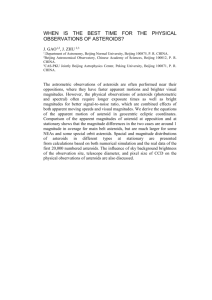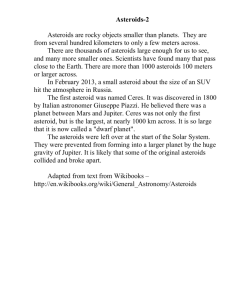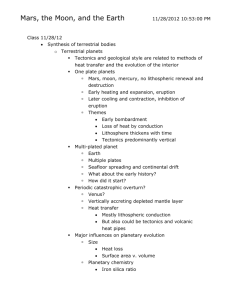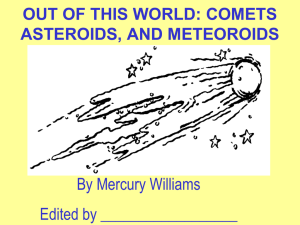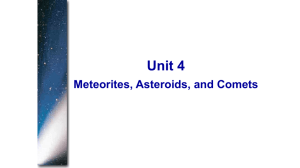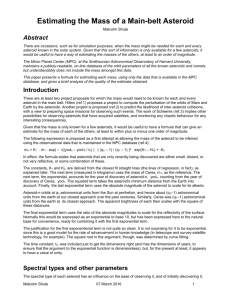hydrated minerals on asteroids: what we do and do not know
advertisement
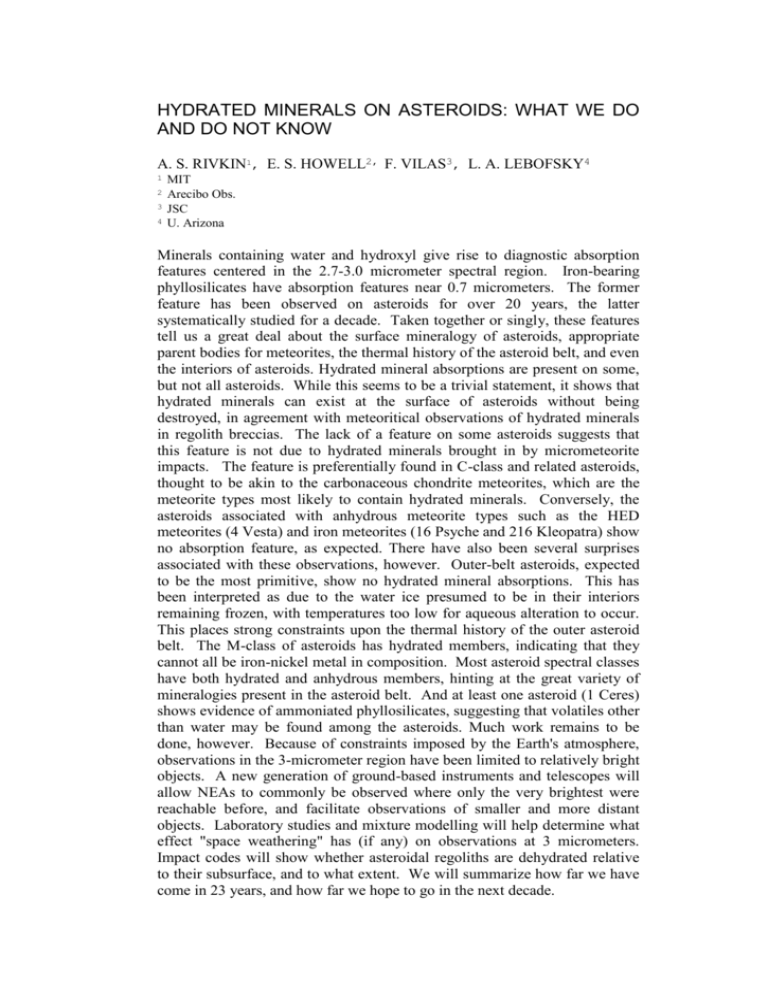
HYDRATED MINERALS ON ASTEROIDS: WHAT WE DO AND DO NOT KNOW A. S. RIVKIN1, E. S. HOWELL2, F. VILAS3, L. A. LEBOFSKY4 1 2 3 4 MIT Arecibo Obs. JSC U. Arizona Minerals containing water and hydroxyl give rise to diagnostic absorption features centered in the 2.7-3.0 micrometer spectral region. Iron-bearing phyllosilicates have absorption features near 0.7 micrometers. The former feature has been observed on asteroids for over 20 years, the latter systematically studied for a decade. Taken together or singly, these features tell us a great deal about the surface mineralogy of asteroids, appropriate parent bodies for meteorites, the thermal history of the asteroid belt, and even the interiors of asteroids. Hydrated mineral absorptions are present on some, but not all asteroids. While this seems to be a trivial statement, it shows that hydrated minerals can exist at the surface of asteroids without being destroyed, in agreement with meteoritical observations of hydrated minerals in regolith breccias. The lack of a feature on some asteroids suggests that this feature is not due to hydrated minerals brought in by micrometeorite impacts. The feature is preferentially found in C-class and related asteroids, thought to be akin to the carbonaceous chondrite meteorites, which are the meteorite types most likely to contain hydrated minerals. Conversely, the asteroids associated with anhydrous meteorite types such as the HED meteorites (4 Vesta) and iron meteorites (16 Psyche and 216 Kleopatra) show no absorption feature, as expected. There have also been several surprises associated with these observations, however. Outer-belt asteroids, expected to be the most primitive, show no hydrated mineral absorptions. This has been interpreted as due to the water ice presumed to be in their interiors remaining frozen, with temperatures too low for aqueous alteration to occur. This places strong constraints upon the thermal history of the outer asteroid belt. The M-class of asteroids has hydrated members, indicating that they cannot all be iron-nickel metal in composition. Most asteroid spectral classes have both hydrated and anhydrous members, hinting at the great variety of mineralogies present in the asteroid belt. And at least one asteroid (1 Ceres) shows evidence of ammoniated phyllosilicates, suggesting that volatiles other than water may be found among the asteroids. Much work remains to be done, however. Because of constraints imposed by the Earth's atmosphere, observations in the 3-micrometer region have been limited to relatively bright objects. A new generation of ground-based instruments and telescopes will allow NEAs to commonly be observed where only the very brightest were reachable before, and facilitate observations of smaller and more distant objects. Laboratory studies and mixture modelling will help determine what effect "space weathering" has (if any) on observations at 3 micrometers. Impact codes will show whether asteroidal regoliths are dehydrated relative to their subsurface, and to what extent. We will summarize how far we have come in 23 years, and how far we hope to go in the next decade.




